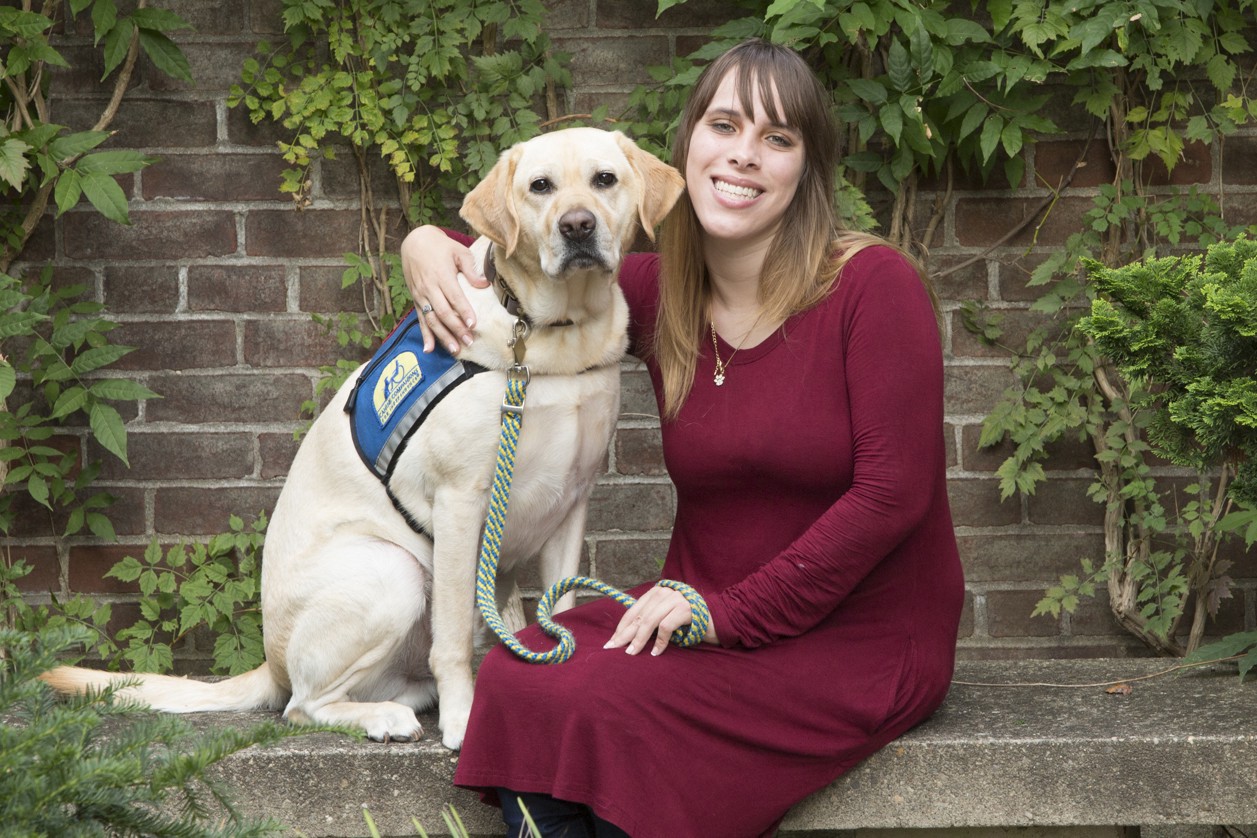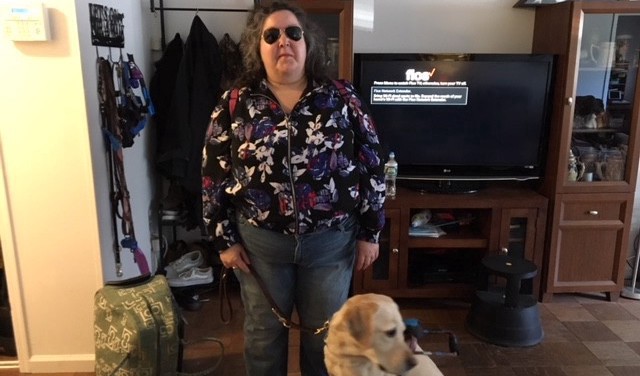By Leah Chiappino
When Ann Chiappetta’s yellow lab guide dog, 8-year-old Bailey, was forced to stay home during the peak of the coronavirus pandemic, he wasn’t receiving the stimulation needed maintain his skills and act as her eyes, the New Rochelle resident says.

“We didn’t go traveling anymore, and he didn’t get that really focused exploration of our environment that really keeps him on his toes,” she said. “That was missing.”
Like people, guide dogs need constant practice to maintain their many skills, and because so many were confined to home during the pandemic, they started to lose them. Many guide dog users, however, said they persevered.
Chiappetta, who is the president of Guide Dog Users of the Empire State, said Bailey ultimately kept up his skills. “The beauty of a guide dog team is that you get to a certain point with them, and it’s so, so fluid, and so the bond is so strong,” she said. “They don’t really need to talk to each other anymore. You just know what each other wants.”
Long Island Council of the Blind President Rosanna Beaudrie, of Levittown, said her 7-year-old guide dog Ella became distracted on walks because she was unable to leave the house during the pandemic, which when a dog is acting as someone’s eyes, can be dangerous.

“ I found it very nerve-racking,” she said. “I was also scared of getting sick, obviously, so she really was kind of a lazy dog, I guess you could call it, during the pandemic, because we weren’t using paratransit, we weren’t riding on the bus, as we ordinarily would do, and we weren’t walking as much as we needed to.”
According to the Americans With Disabilities Act, a service dog has been trained to perform tasks or work for someone with a disability. A guide dog is trained to maneuver around obstacles and safely navigate for their blind owners by stopping at crosswalks and even engaging in “intelligent disobedience,” for which the dog will disobey if it senses crossing a street or moving forward would be dangerous.
Juliana Brisco, of Floral Park, has a 7-year-old yellow lab and golden retriever mix named Rowdy, a service dog to assist her with her mild cerebral palsy. He knows more than 60 commands, including helping with balance, alerting others when she falls and carrying objects. Though his work is different than a guide dog, she experienced similar issues with distraction once she started going to more places during the pandemic. “I think it has to do with boredom, and he kind of wants to see what’s going on,” she said.
She also said since the pandemic, more people seem to have forgotten the golden rule of interacting with a service dog user: Don’t pet the dog without permission. “I noticed people are more inclined to come up to him and be like, ‘Oh my gosh, a dog,’” she said.
Some service dog users have even had to retire their dogs early because of the pandemic, especially if they were already older and fell out of their training.
Chiappetta said, though, that in Bailey’s case, the break in activity may allow him to work longer. “ He had such an easy time the last 21 months that I think he’ll be happy and healthy to work until least 10,” she said.
Most guide dog schools had remedies to deal with unwanted behavior during the pandemic. As a graduate of the Guide Dog Foundation in Smithtown, Beaudire said she met virtually with a trainer and had someone walk behind her while she was on a video call to show the trainers how Ella is walking.
“She was like the lazy walker,” she said. “With the trainer, we were able to do some treat-and-reward to get her to regain her normal pace.”
This type of “after care,” or subsequent lifetime training that the Guide Dog Foundation offers once a client takes home a dog, happened before the pandemic, but was usually done in person.
Guide dogs are first placed with puppy raisers to learn socialization and basic commands and are then transferred to a school where trainers work with a number of several dogs to teach them the skills they need to perform their jobs. They then train with their handlers for several weeks and maintain follow-up training for most of their working lives. Service dog schools tend to follow similar protocols, and other handlers self-train service dogs at home.
Chiappetta graduated from Guiding Eyes for the Blind in Westchester and serves on the school’s graduate council. She said the school needed to “ be creative” when it came to instructing puppy raisers in socializing puppies, which will need to be acclimated to a variety of scenarios and kinds of people they will encounter daily as working guide dogs.
“The pandemic shut down anything that you had to do socially, and raising a puppy is social,” Chiappetta said. “As a graduate, I was kind of watching with dread.”








